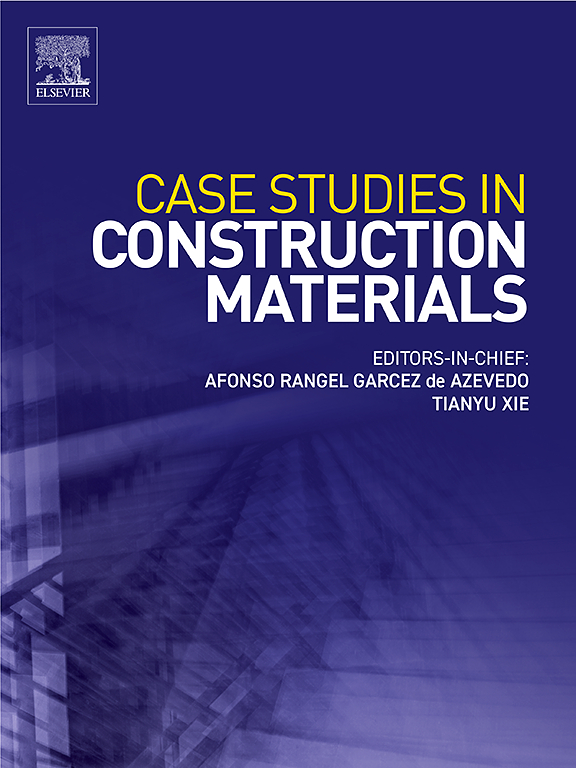铁尾矿粉在水泥基复合材料中的应用:从粒径分布评价充填效果
IF 6.6
2区 工程技术
Q1 CONSTRUCTION & BUILDING TECHNOLOGY
引用次数: 0
摘要
铁尾矿是一种重要的危险废物,可以用作混凝土的矿物掺合料,但其作用机制有待阐明。本文基于Horsfield和Andreasen最密充填理论,定义了铁尾矿粉的充填效应系数δ。选择了四个粒径区间来显示ITP的分布如何影响水泥基复合材料(CBCs)的孔隙结构。ITP活性的实验测量表明,利用δ可以计算出不同细度值的ITP活性指数,而无需进行耗时的砂浆试验。我们的分析表明,ITP粒径<; 5 µm对填充效果至关重要。然而,填充效应对活性指数的贡献是有限的:ITP细度的过度增加并没有进一步增强其活性。不同细度值的ITP 28 d活性指数与δ的总体相关系数为0.9076。建立了ITP活性指数评价公式,在不进行砂浆试验的情况下,定量计算了不同细度ITP的活性指数。本文章由计算机程序翻译,如有差异,请以英文原文为准。
Iron tailing powder in cement-based composites: Evaluating filling effect from particle-size distribution
Iron tailings, a significant hazardous waste, can be put to use as mineral admixtures in concrete, but the mechanism by which they function requires elucidation. In this study, we define a filling-effect coefficient δ for iron tailing powder (ITP) based on the Horsfield and Andreasen closest-packing theories. Four intervals of the particle size are selected to show how the distribution of ITP affects the pore structure of cement-based composites (CBCs). Experimental measurements of the activity of ITP show that by using δ, the activity indices of ITPs with different fineness values can be calculated without time-consuming mortar tests. Our analysis indicates that ITP particle sizes < 5 µm are essential for the filling effect. However, the contribution of the filling effect to the activity index is limited: Excessive increase in the fineness of ITP does not further enhance their activity. The overall correlation coefficient between δ and the 28 d activity index of ITP with different fineness values is 0.9076. An evaluation formula of the activity index of ITP is established to quantitatively calculate the activity index of ITP with different fineness without mortar test.
求助全文
通过发布文献求助,成功后即可免费获取论文全文。
去求助
来源期刊

Case Studies in Construction Materials
Multiple-
CiteScore
7.60
自引率
19.40%
发文量
842
审稿时长
63 days
期刊介绍:
Case Studies in Construction Materials provides a forum for the rapid publication of short, structured Case Studies on construction materials. In addition, the journal also publishes related Short Communications, Full length research article and Comprehensive review papers (by invitation).
The journal will provide an essential compendium of case studies for practicing engineers, designers, researchers and other practitioners who are interested in all aspects construction materials. The journal will publish new and novel case studies, but will also provide a forum for the publication of high quality descriptions of classic construction material problems and solutions.
 求助内容:
求助内容: 应助结果提醒方式:
应助结果提醒方式:


